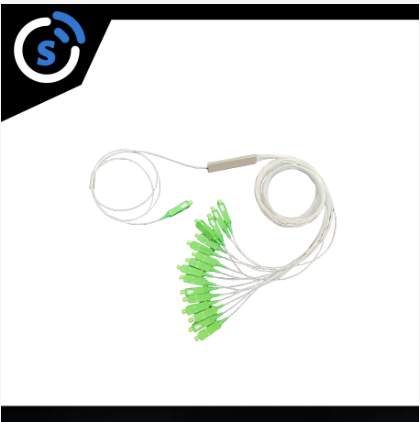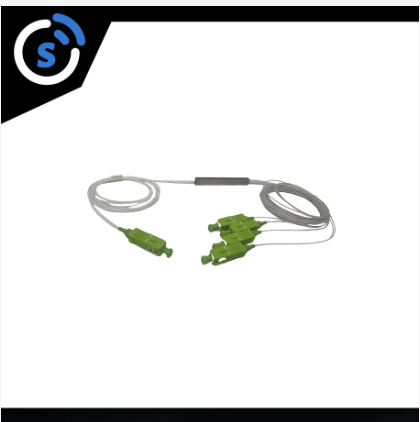Introduction: Key Considerations for Fiber Optic Installations
When considering fiber optic installations, it's essential to examine several factors to ensure optimal performance and reliability. Fiber optic connectivity technology offers numerous advantages over traditional cabling methods, such as greater bandwidth capacity, faster data transfer rates, and extensive distance capabilities. This introduction delves into fundamental aspects of fiber optics and the environmental and application-specific requirements that will guide successful installations.
Understanding Fiber Optic Connectivity Fundamentals
Fiber optic technology utilizes light transmission through glass fibers, offering significant advantages compared to copper wiring. It works by transmitting data through pulses of light, providing unparalleled bandwidth capacity and data transfer rates, which make it exceptionally superior for modern communication needs. Unlike copper cables, which rely on electrical signals, fiber optics offer less signal loss and greater speed. Key components in this system include the optical transmitters, receivers, and the fiber itself, which together facilitate the seamless flow of high-speed data in communication networks.
Environmental and Application-Specific Requirements
Fiber optic installations need to account for environmental factors such as temperature, moisture, and physical obstacles, all of which can impact installation decisions and fiber type selection. Specific requirements vary across industries, with telecommunications demanding long-distance capabilities, healthcare requiring reliability in data transmission for medical imaging, and manufacturing needing robust structures to withstand factory conditions. Industry standards, such as those set by the International Telecommunications Union (ITU), help navigate these diverse environmental conditions and application needs. By understanding these guidelines and the specific needs of each sector, fiber optic technology can be reliably integrated to enhance performance across different environments.
Proper Cable Handling: Preventing Damage During Installation
Bend Radius Management for Signal Integrity
Maintaining the correct bend radius is crucial to preserve signal integrity in fiber optic cables, preventing micro-bends that can compromise performance and reliability. Fiber optic cables are extremely sensitive to bends, as excessive stress can hinder the transmission of light signals, leading to signal degradation. Industry standards typically provide specifications for allowable bend radii to assist in installation procedures. For example, the Telecommunications Industry Association (TIA) recommends a bend radius of at least ten times the fiber diameter for single-mode fibers. Adhering strictly to these guidelines ensures that the fiber optics maintain their effectiveness in data transmission without interruptions or losses.
Tension Control During Cable Pulling
Effective tension control during cable pulling is vital to prevent potential damage. Excessive tension can lead to fiber breakage or attenuation losses, impacting network performance. Recommended tension limits should not exceed the maximum tensile load outlined in the manufacturer's specifications for the specific fiber cable type. It's recommended to use gentle pulling techniques coupled with specialized pulling grips to distribute tension evenly. Expert publications like the IEEE Handbook on Fiber Optics emphasize that maintaining tension levels within specified limits is effective in mitigating risks, thereby ensuring the network's long-term reliability and performance.
Physical Protection Strategies
Providing physical protection for fiber optic cables during installation is essential to avoid damage. Techniques such as using conduit, raceways, and protective coverings offer shielding from environmental and physical hazards. Regular inspections are critical to identify and address potential damage before installation is finalized. For instance, the National Electrical Code (NEC) suggests conducting thorough checks to guarantee that protective elements are intact and functional. Implementing these best practices ensures the secure installation of fiber optic cables and averts critical failures in the network infrastructure, safeguarding the investment in fiber optic connectivity.
Testing and Certification: Ensuring Optimal Performance
OTDR Testing Fundamentals
Optical Time Domain Reflectometer (OTDR) testing is vital for assessing the quality and reliability of fiber optic installations. This process involves sending light into the fiber and analyzing the backscattered light to identify faults and measure loss, enabling an in-depth characterization of fiber optic networks. OTDR testing is essential for detecting hidden faults which might not be visible to the naked eye, maintaining optimal performance across the network. Expert recommendations suggest setting precise testing parameters, such as pulse width and refractive index, to ensure thorough evaluations and accurate readings of the fiber network's health.
Insertion Loss Measurement Techniques
Insertion loss measurement is a pivotal testing procedure that measures the amount of light lost as it travels through the fiber optic system. This ensures the network's integrity and efficiency. Techniques such as the use of light sources and power meters are standard approaches endorsed by industry giants like the Telecommunications Industry Association (TIA). According to TIA standards, acceptable loss levels are typically less than 0.75 dB per connector and less than 0.3 dB per splice. Case studies show that higher-than-standard insertion losses can lead to reduced data transmission efficiency and network reliability, compromising overall network performance.
Continuity Verification Standards
Continuity verification is a process aimed at guaranteeing an uninterrupted fiber optic path and ensuring expected performance levels are met. Standard protocols involve using tools such as visual fault locators and light sources to confirm the fiber's continuity. This rigorous testing is necessary, as statistics indicate that installations without verified continuity exhibit failure rates up to 20% higher than those tested thoroughly, impacting both network efficiency and long-term reliability. Ensuring continuity verifies that every segment of the fiber optic path is functional, providing assurance against disruptive faults and failures.

Maintaining Clean Connections: Avoiding Contamination and Signal Loss
Fiber Optic Cleaning Protocols
Maintaining the cleanliness of fiber optic connectors is vital to ensure minimal contamination and prevent signal loss. Fiber optic cleaning protocols involve the use of specific materials and methods to keep connectors free from dirt and debris. Key tools used include lint-free wipes, isopropyl alcohol, and specialized cleaning pens. It's crucial to conduct the cleaning in a sterile environment to maximize efficiency and avoid introducing new contaminants. Ensuring a clean setting helps preserve the pathways that support high-speed data transmission by minimizing loss. Regular maintenance should be factored into schedules; it's generally recommended that fiber optic connectors be cleaned before every connection or disconnection to ensure optimal performance.
Connector Inspection Best Practices
Routine inspections of fiber optic connectors are essential to detect dirt, scratches, or damage that could lead to performance degradation. Establishing a checklist can streamline this process. Key inspection items include visual evaluation for physical damages, inspection scopes for finer details, and testing methods like attenuation measurement. Industry experts suggest conducting these inspections at regular intervals based on system usage, with high-traffic environments requiring more frequent checks. This systematic approach ensures that issues are identified and resolved before they impact network performance, maintaining a high level of service quality.
Contamination Prevention Strategies
Implementing effective contamination prevention strategies is pivotal in avoiding increased insertion loss in fiber optic systems. Proper handling techniques are crucial, such as avoiding direct contact with the connector end face and placing protective caps on unused connectors. Storing connectors in dry environments also reduces contamination risks. Data shows a direct correlation between contamination and insertion loss, thus highlighting the importance of preventive measures. By integrating these strategies into daily practices, users can maintain the integrity of their fiber optic networks, directly contributing to their efficiency and longevity.
Documentation: Keeping Accurate Records for Future Maintenance
As-Built Diagram Standards
Utilizing standardized as-built diagrams is essential for documenting fiber optic installations effectively. These diagrams serve as a comprehensive reference for maintenance teams, enabling precise identification of installation paths and component labels.
-
Key Elements to Include:
- Installation Paths: Documenting the precise routes taken by cables to ensure ease of access during maintenance.
- Component Labels: Clearly labeling components to prevent misidentification and facilitate quick repairs.
To ensure alignment with industry practices, these diagrams should adhere to standards set by organizations like the Telecommunications Industry Association (TIA). Following such guidelines guarantees the diagrams are not only detailed but universally understandable.
Test Result Logging Methods
Effective logging of test results involves maintaining accuracy and consistency in record-keeping practices. This can be achieved through various methods:
- Using Software Tools: Implementing specialized software or databases can streamline the management of test data, allowing for efficient generation of reports.
- Consistency in Records: Consistent record-keeping enhances the reliability of data, crucial for quick maintenance response.
For example, thorough logging has proven instrumental in optimizing maintenance protocols, cutting down response times by enabling faster identification of issues, thereby minimizing downtime.
Labeling Conventions for Fiber Networks
Establishing best practices for labeling fiber optic networks is crucial for maintaining clear identification of components and pathways.
- Standardized Labeling Conventions: Implementing standardized labeling reduces errors during maintenance and troubleshooting. This involves using consistent symbols and color codes that are widely recognized across the industry.
-
Examples of Effective Strategies:
- Success Stories: Leveraging strategies from successful installations can guide the adoption of effective labeling habits that simplify network management.
These practices ensure that labels are not only clear but aligned with maintenance strategies, ultimately promoting efficient and error-free network operations.
Conclusion: Best Practices for Reliable Fiber Optic Networks
Summary of Critical Implementation Steps
Successfully deploying fiber optic networks requires strict adherence to several key implementation steps. Grasping these principles is essential for achieving optimal performance and enhancing fiber optic reliability. Professionals should prioritize installation accuracy, ensure thorough testing, and maintain diligent records for future reference. These steps collectively contribute to the overarching goal of reliability in fiber optic networks, ensuring they provide consistent and high-quality connectivity over time.
Future-Proofing Through Consistent Maintenance
Ongoing maintenance is crucial for ensuring that fiber optic networks remain functional and future-proof. Regular audits and technological updates can prevent networks from becoming obsolete and enhance their performance. By prioritizing maintenance in operational strategies, businesses can safeguard their fiber optic investments and ensure uninterrupted connectivity. It's essential to recognize that consistent maintenance not only protects the network's lifespan but also shields it from potential downtimes or inefficiencies.
FAQs: Fiber Optic Installations
What are the main advantages of using fiber optic technology?
Fiber optic technology offers greater bandwidth capacity, faster data transfer rates, and the ability to transmit data over longer distances with less signal loss compared to traditional copper cabling.
Why is bend radius important in fiber optic installations?
Maintaining the correct bend radius is important to prevent micro-bends that can compromise signal integrity, resulting in performance degradation and signal loss.
How can contamination affect fiber optic networks?
Contamination can lead to increased insertion loss, resulting in reduced efficiency and reliability of the fiber optic network. Implementing proper cleaning and preventive measures can help maintain performance.
What is OTDR testing and why is it necessary?
OTDR testing involves analyzing backscattered light within the fiber to detect faults and measure loss. It is crucial for maintaining the reliability and performance of fiber optic networks by identifying hidden faults.
Table of Contents
- Introduction: Key Considerations for Fiber Optic Installations
- Proper Cable Handling: Preventing Damage During Installation
- Testing and Certification: Ensuring Optimal Performance
- Maintaining Clean Connections: Avoiding Contamination and Signal Loss
- Documentation: Keeping Accurate Records for Future Maintenance
- Conclusion: Best Practices for Reliable Fiber Optic Networks
- FAQs: Fiber Optic Installations

